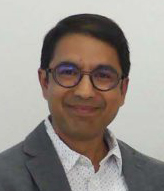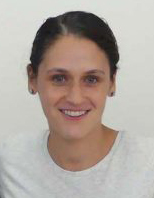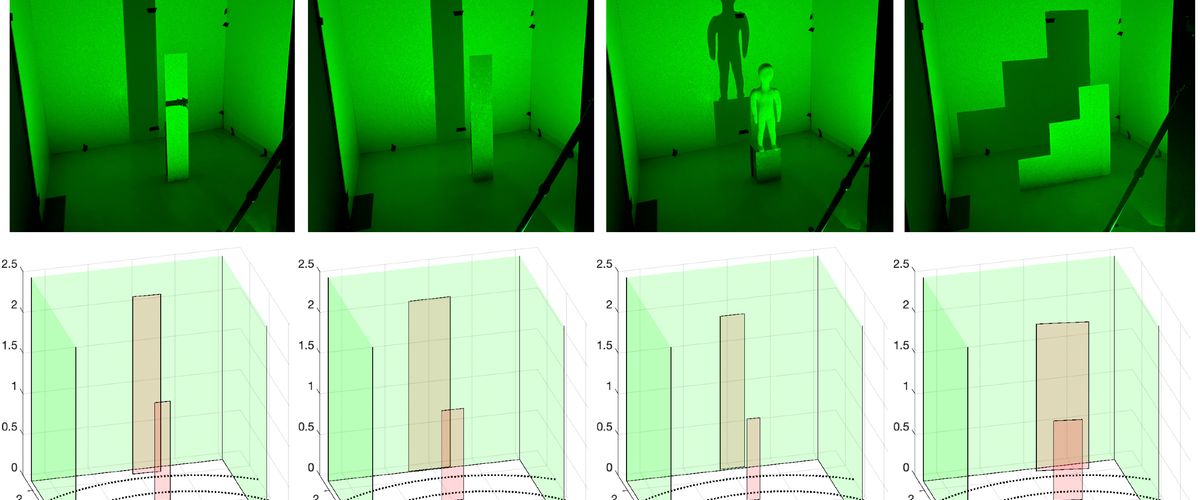Goyal and team bring snapshot speed to non-line-of-sight imaging
By Patrick L. Kennedy
Using light and shadow to “see” around corners, as if through an invisible periscope, is a futuristic-sounding but very real field of research. Now, Professor Vivek Goyal (ECE) and one of his star doctoral students have advanced this cutting-edge field even further. In a paper recently published in Nature Communications and presented at the Optica Imaging Congress, they report a new and much faster method of non-line-of-sight (NLOS) imaging—that is, reconstructing a picture of something that lies hidden from view. Beyond the obvious military and spycraft applications, Goyal hopes that eventually the technology will be used to enhance vehicular safety for civilians.

“A lot of it is just super cool, to be able to extend your field of vision,” says Goyal. “But it might be highly impactful. If you can extend from just line-of-sight view to a little bit beyond line-of-sight, that can make a big difference.”
NLOS imaging makes use of the surprising amount of information contained within an object’s shadow—even the narrow slice of shadow that is barely perceptible under a door or around a corner. Goyal’s new study builds upon his previous work, in which he used a pulsed laser scanned along a small arc, in conjunction with a photodetector, to reconstruct images of objects hidden behind an ajar door or around hallway corners. While that study was groundbreaking, setting up each shot was time-consuming.
In the present work, the team captured the data and reconstructed images at the speed of a snapshot—as fast as 0.4 seconds. Moreover, they were able to map out large areas of a hidden room in the background and track moving objects (again, hidden from view) in the foreground.
The work is still in its early stages, and Goyal would like to see improvements in the resolution of the images, but “conceptually, we have made large advances in non-line-of-sight imaging,” he says. “It’s the next step in making the data collection much faster.”
Goyal envisions search-and-rescue applications and perhaps more general uses like preventing traffic tragedies.
“A classic example,” Goyal says, “is being able to see if there’s a kid around the corner of a parked car, about to cross the street. Just split-second differences in knowing that a child is there can mean avoiding a collision.”

NLOS imaging is an inherently convergent area of research, combining disparate disciplines. “It’s at the intersection of optics and photonics and computers and mathematics,” Goyal says. “Buried inside our computations are some deeply insightful numerical approximations by the lead author, Dr. Sheila Seidel [ENG’23],” winner of the 2023 BU Electrical & Computer Engineering Doctoral Achievement Award. The co-lead author, Dr. Hoover Rueda-Chacón, was a postdoctoral researcher in Goyal’s group and is now an Assistant Professor at the Universidad Industrial de Santander in Columbia. Other collaborators hailed from the Draper Lab and Politecnico di Milano.
